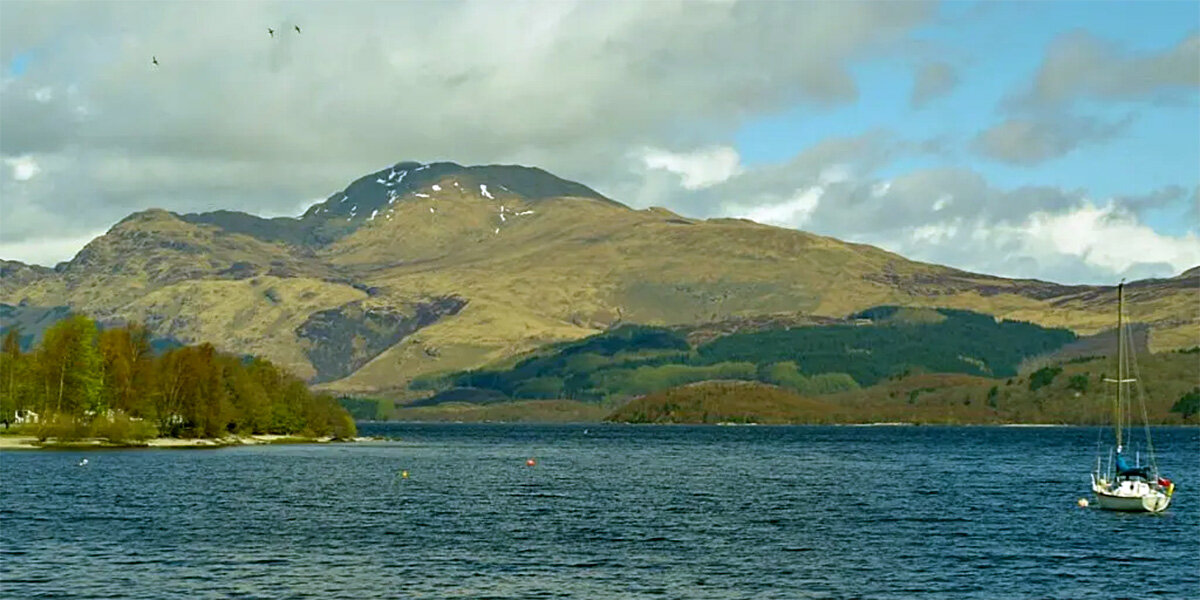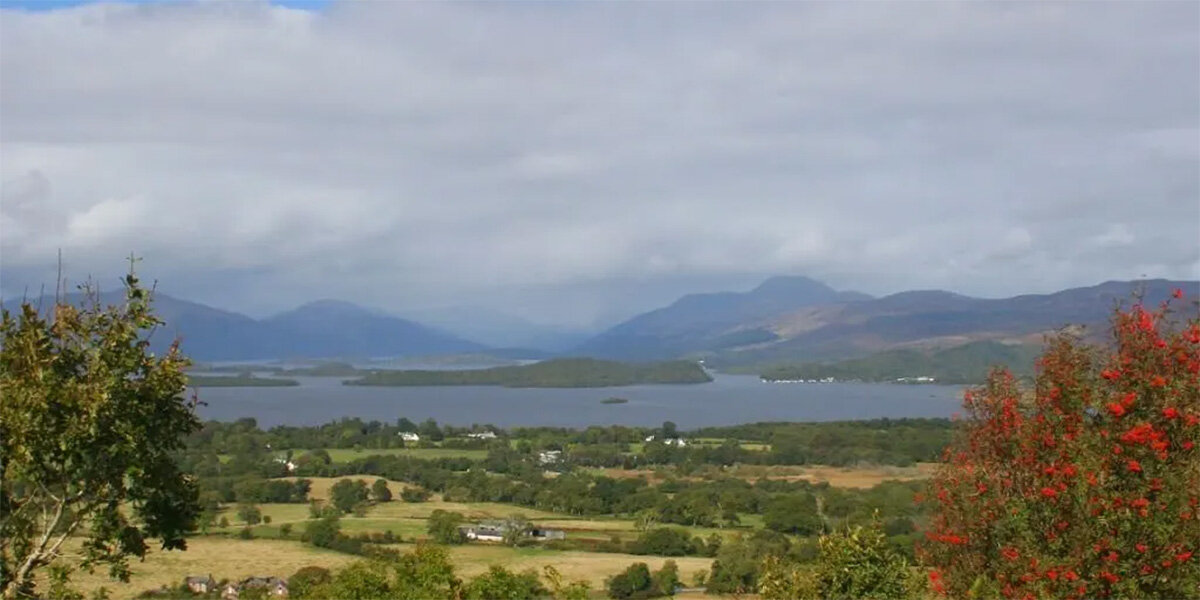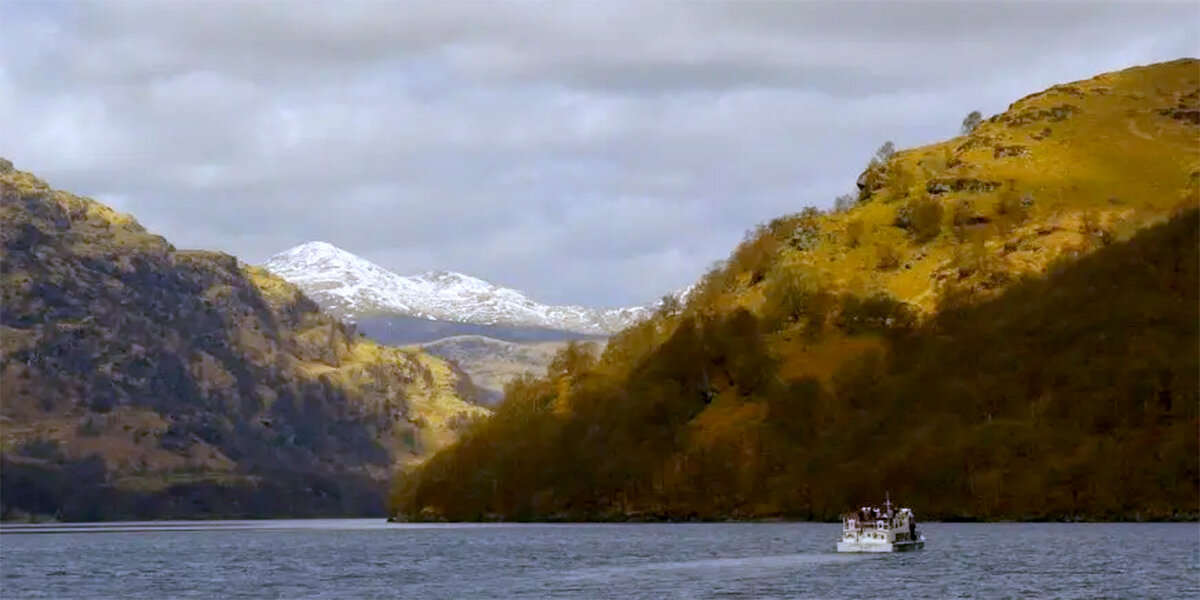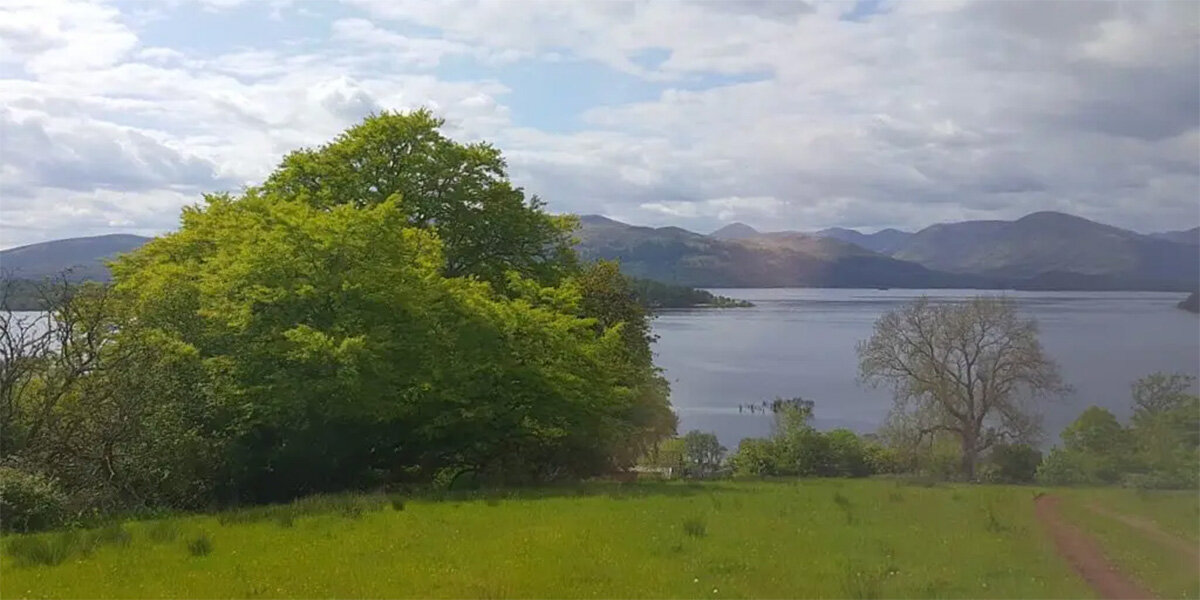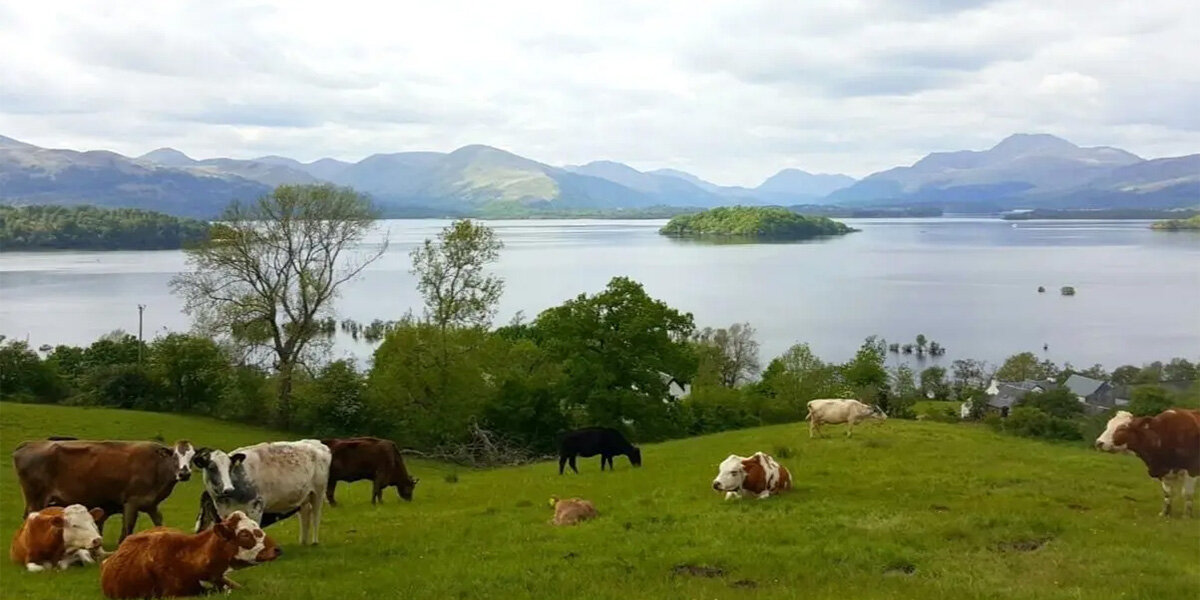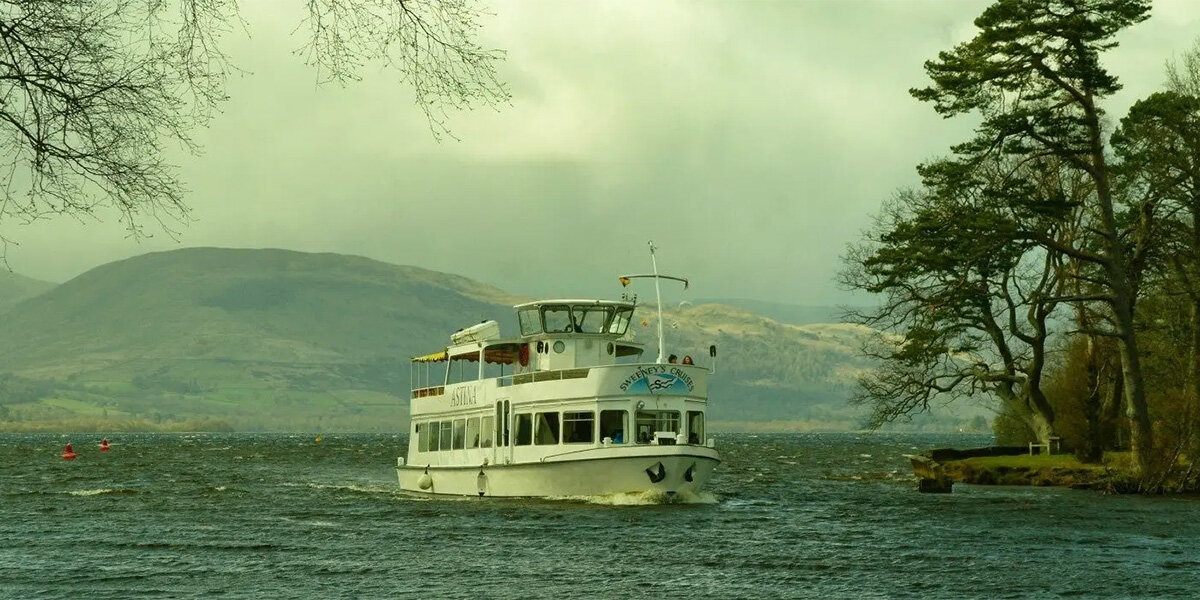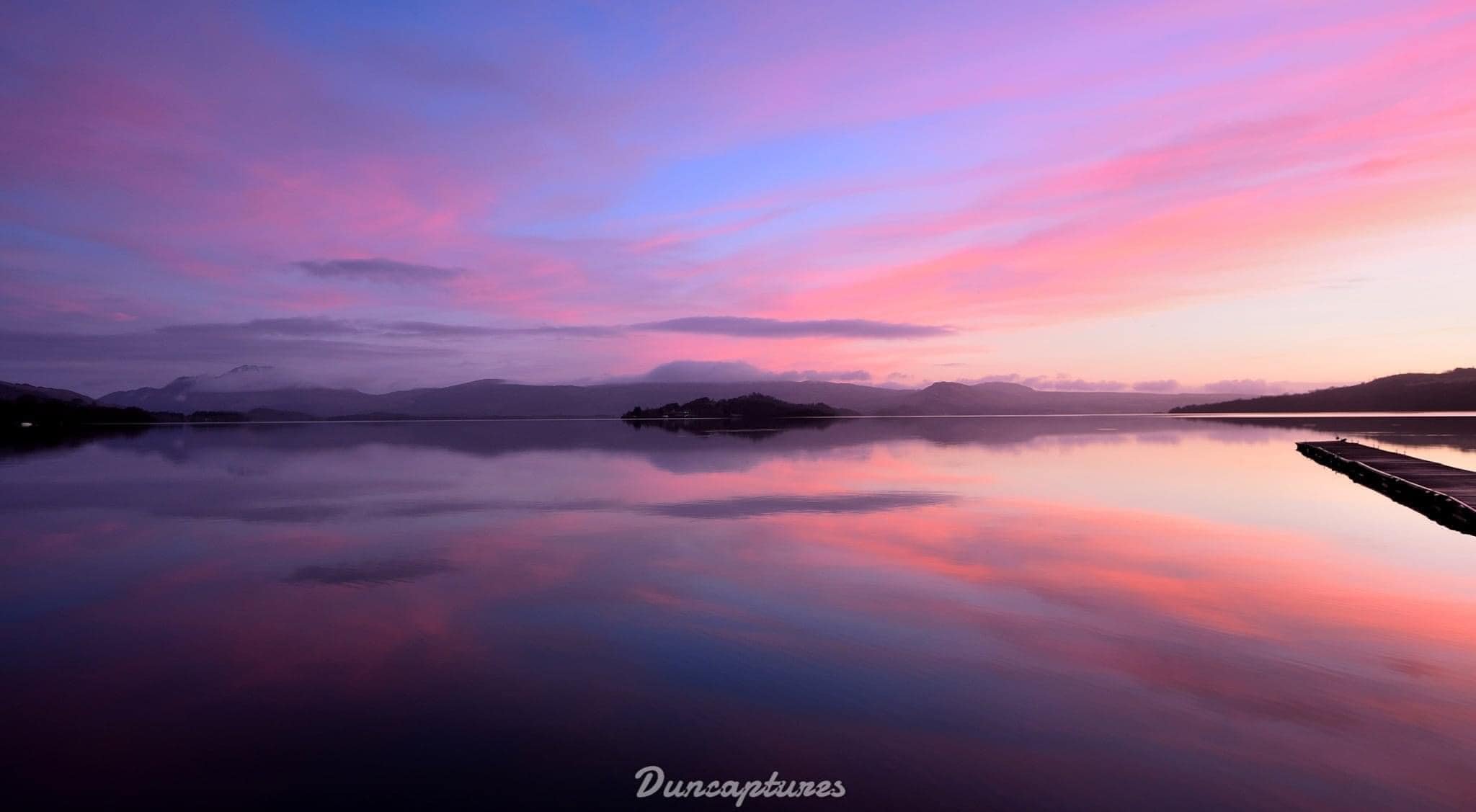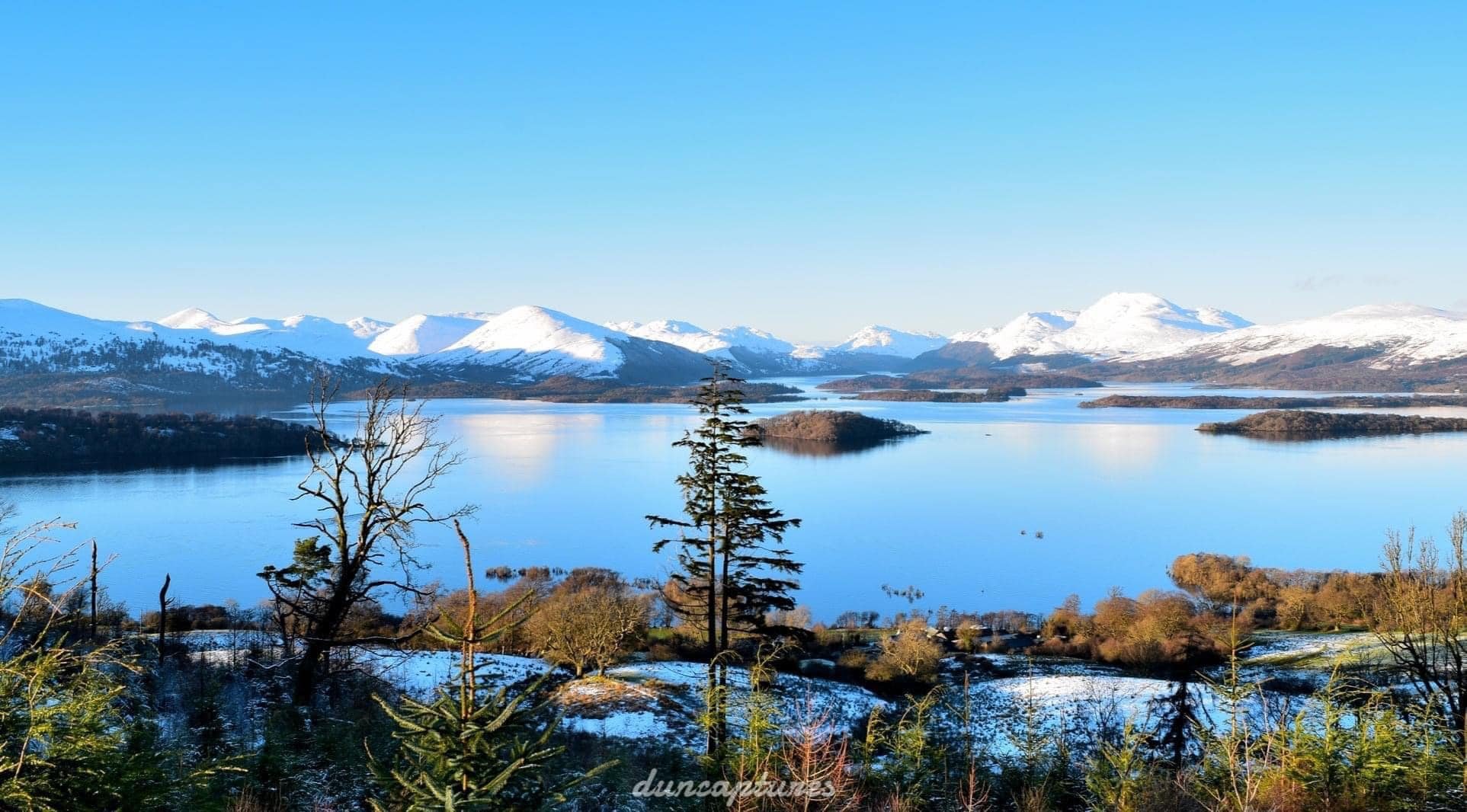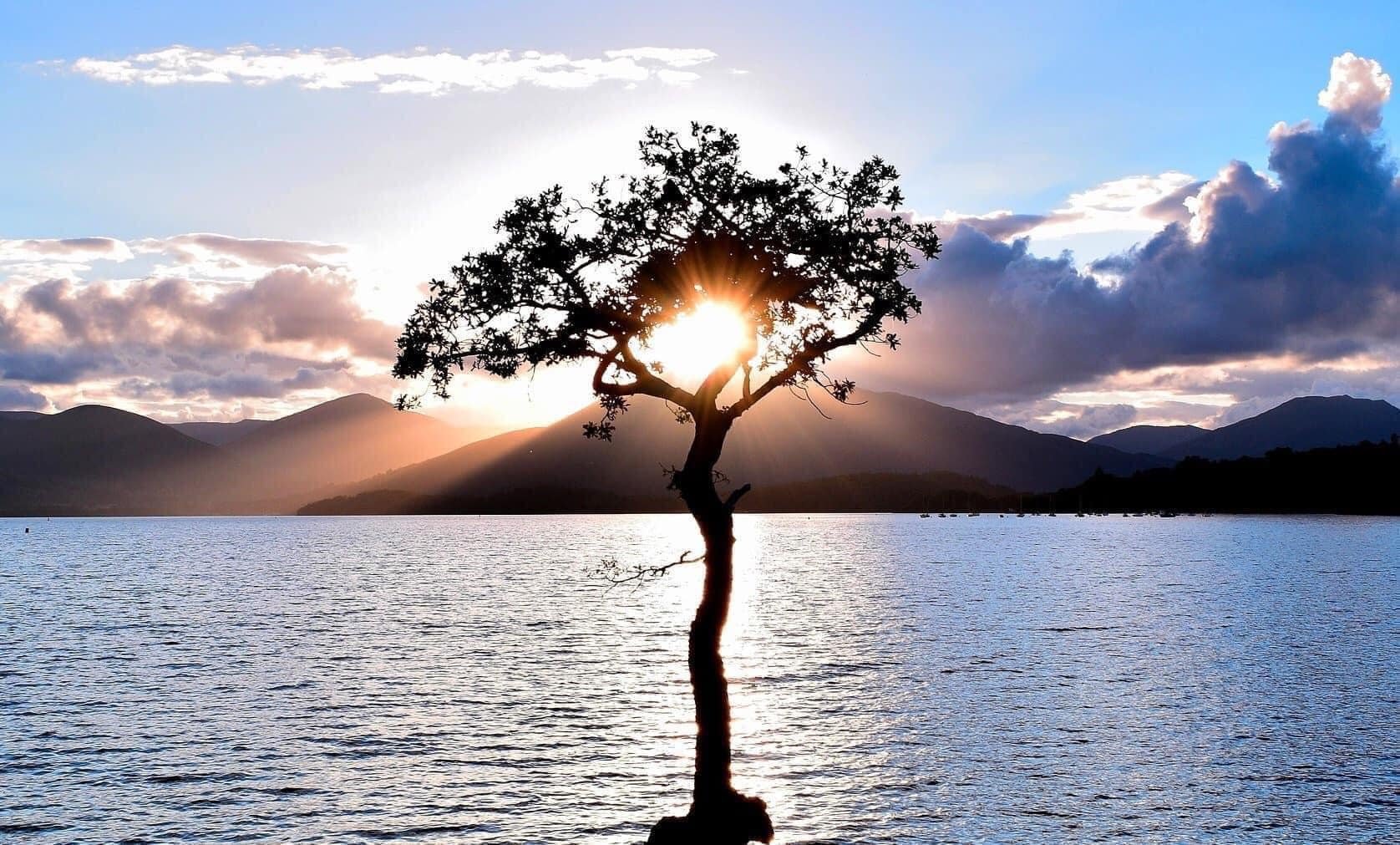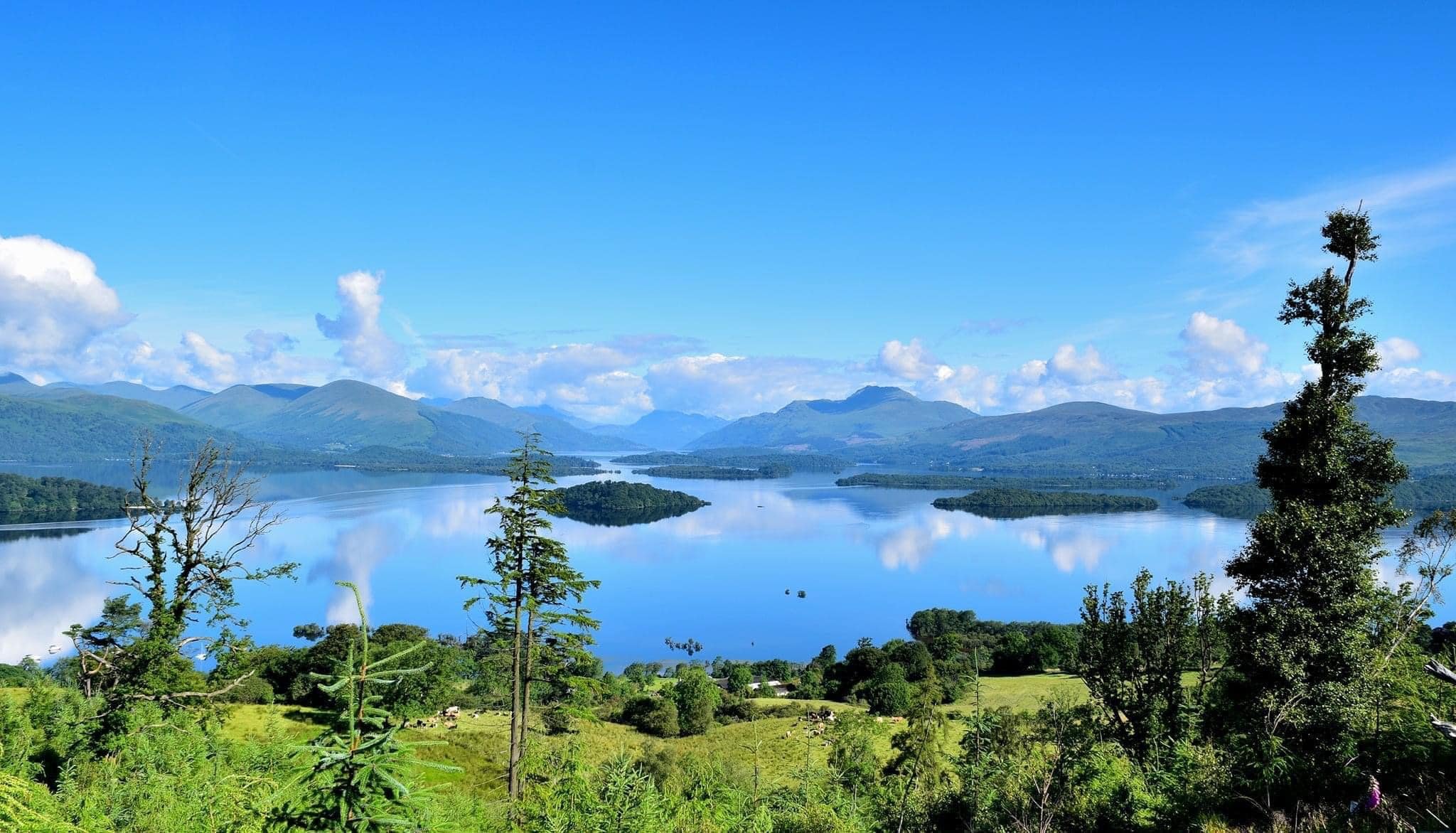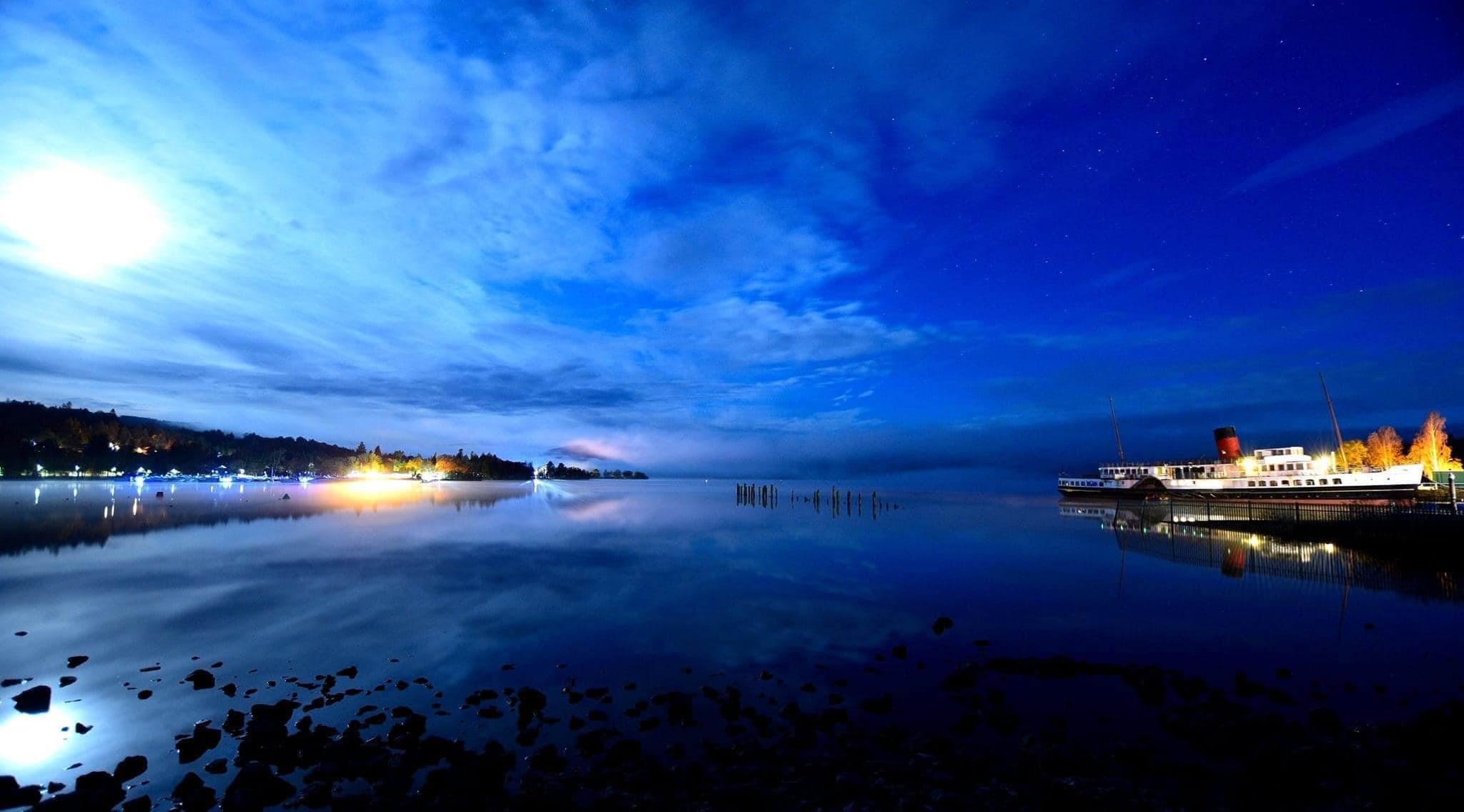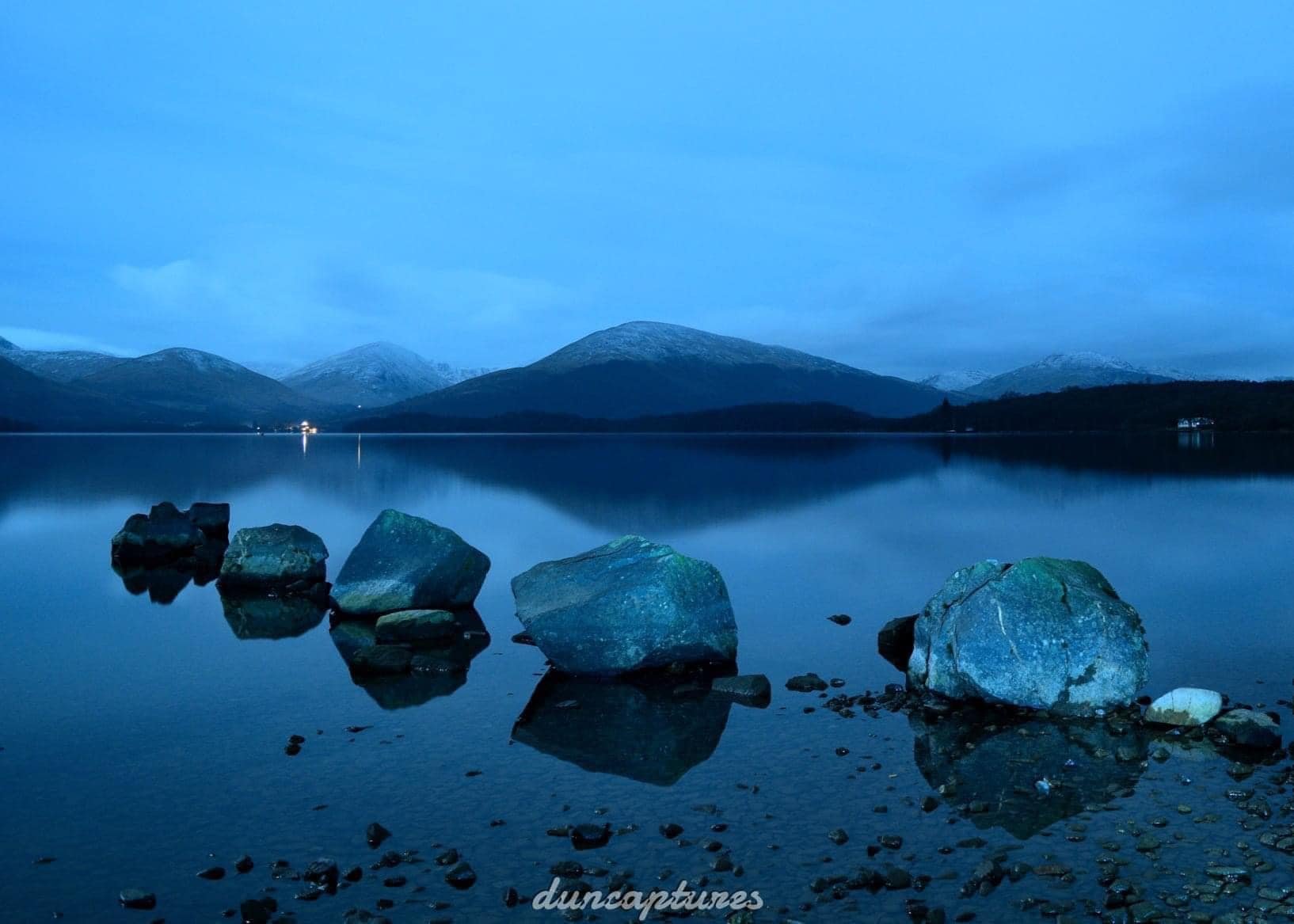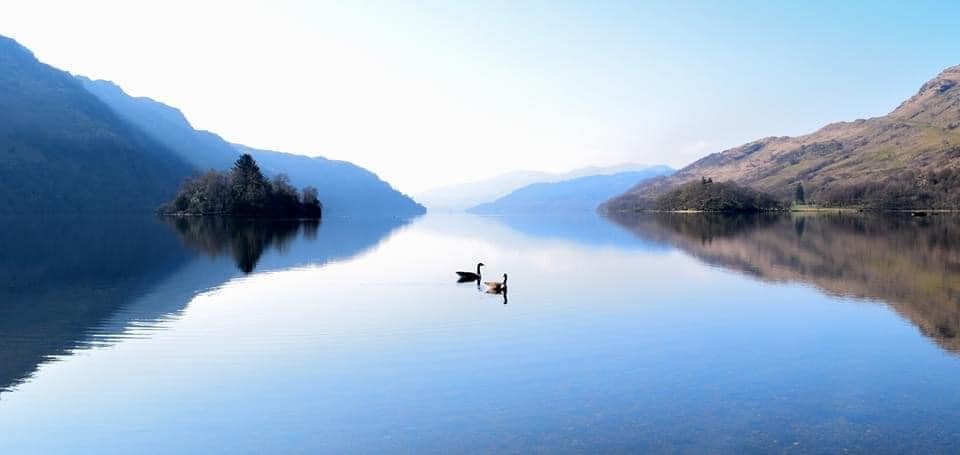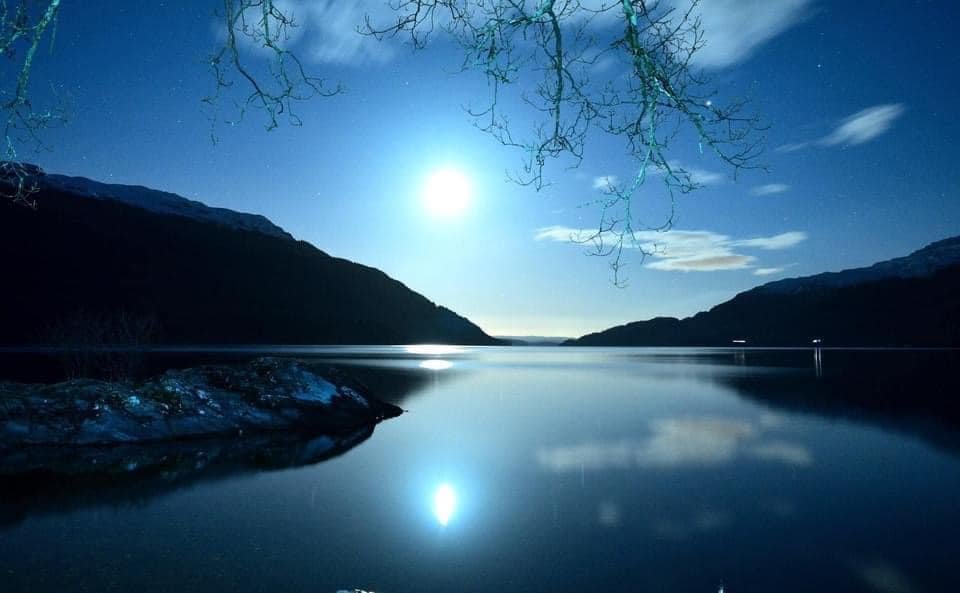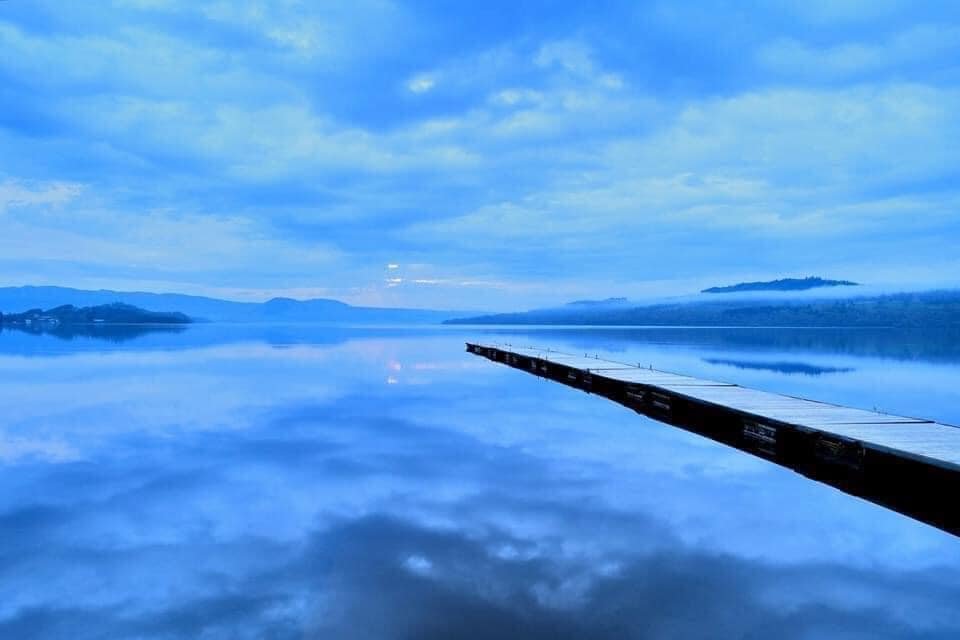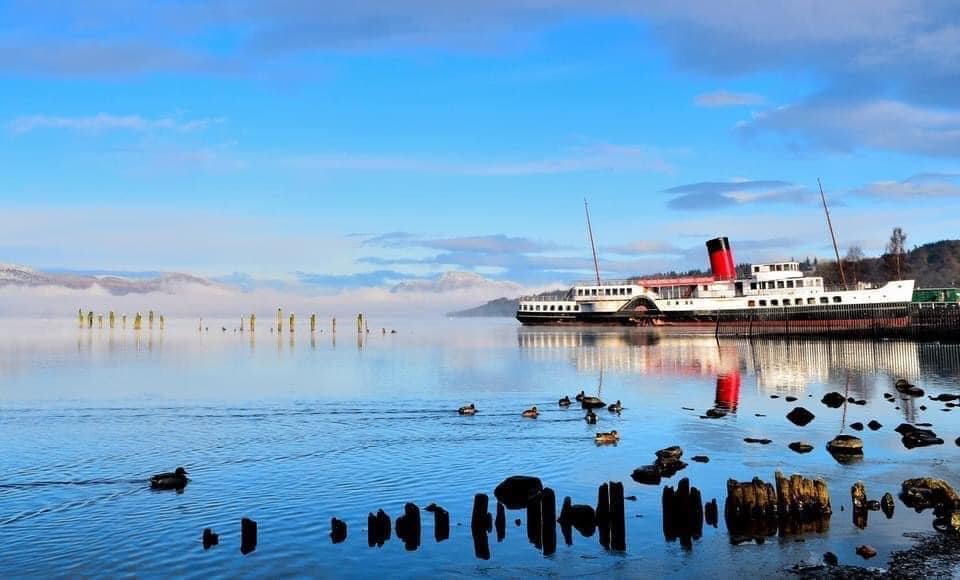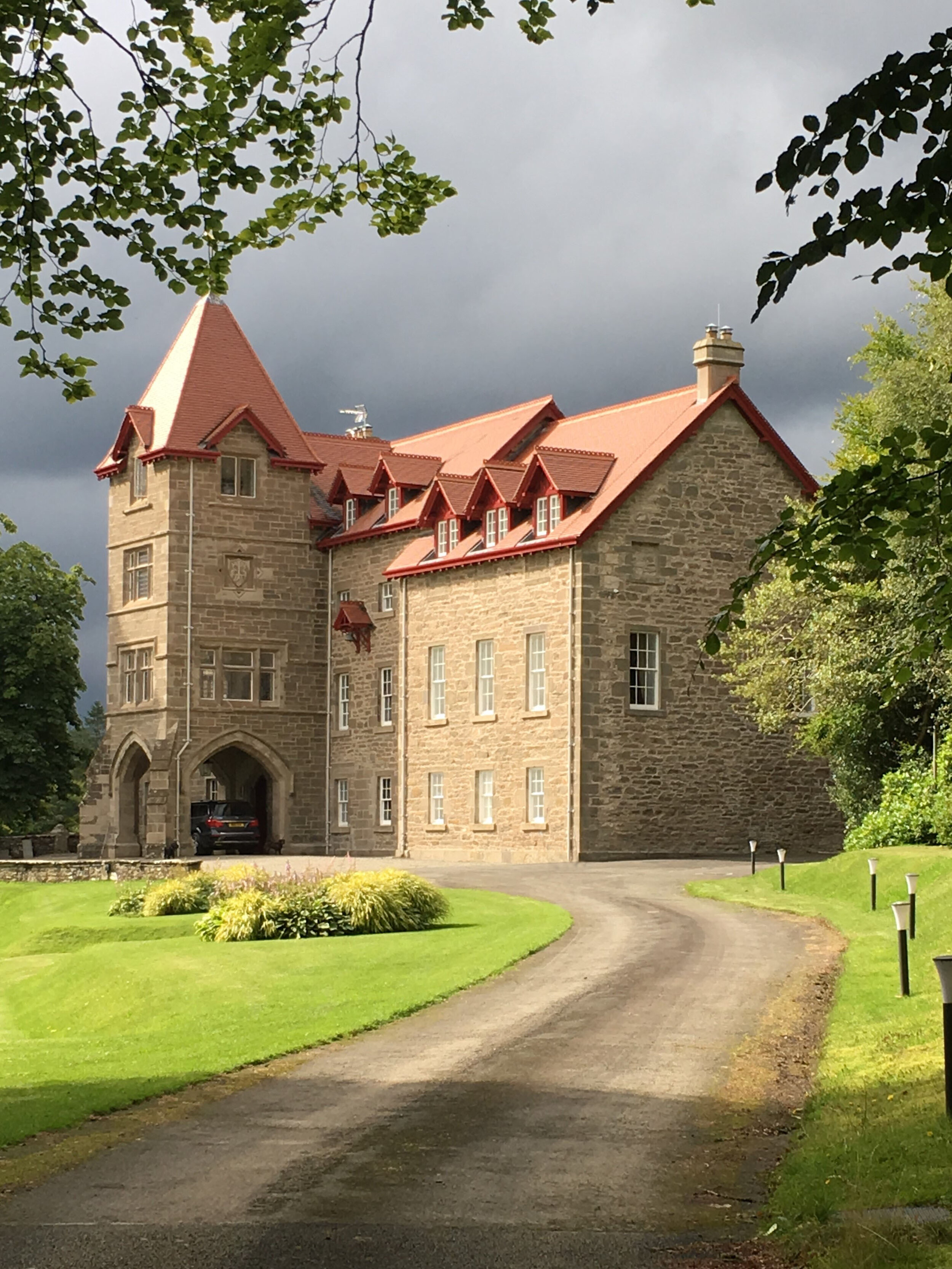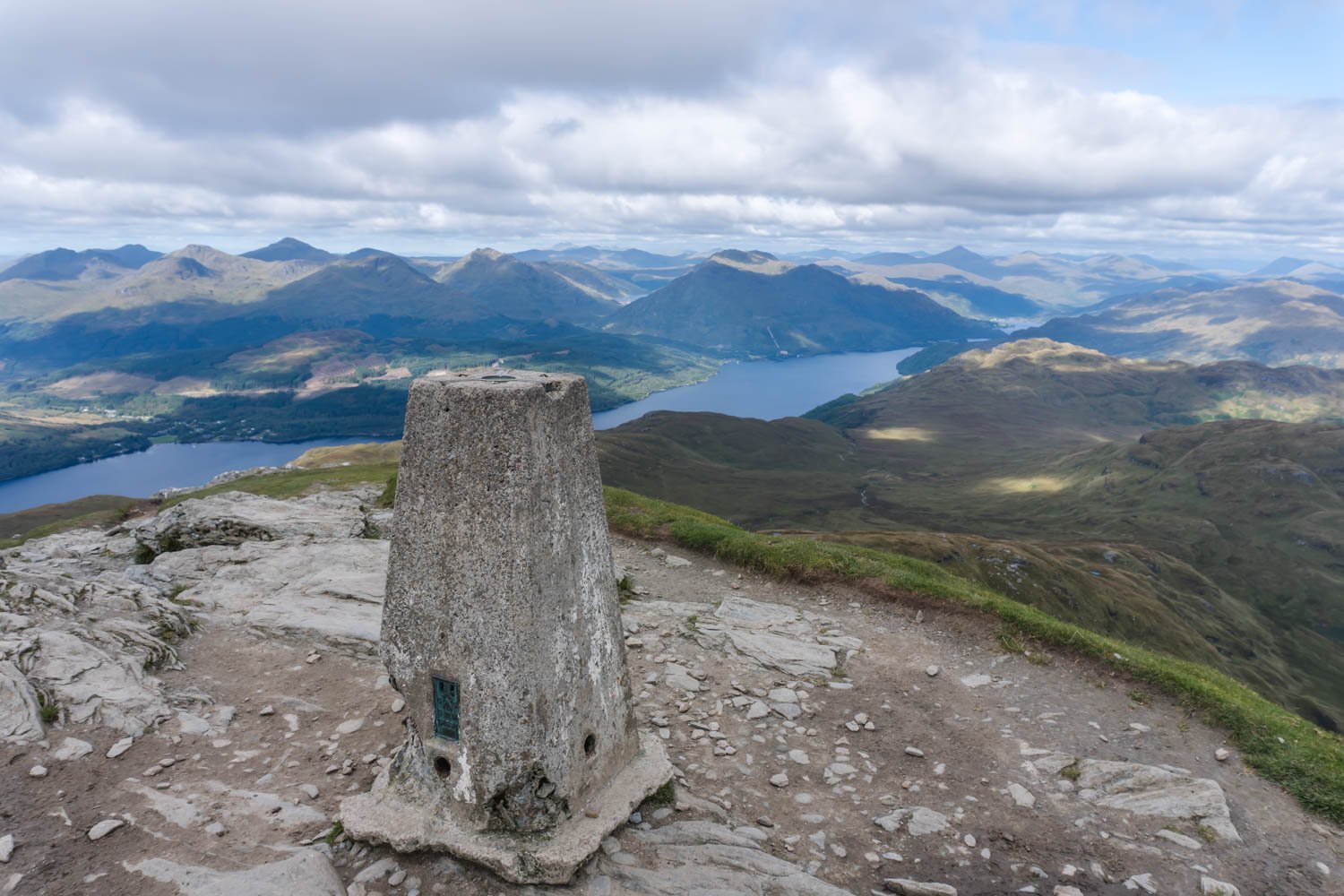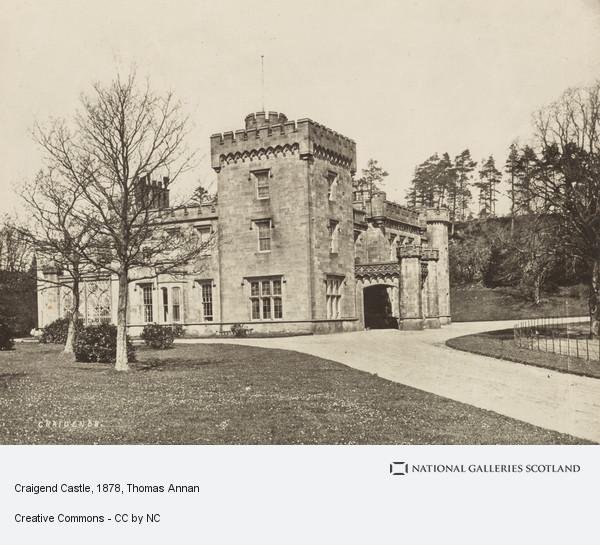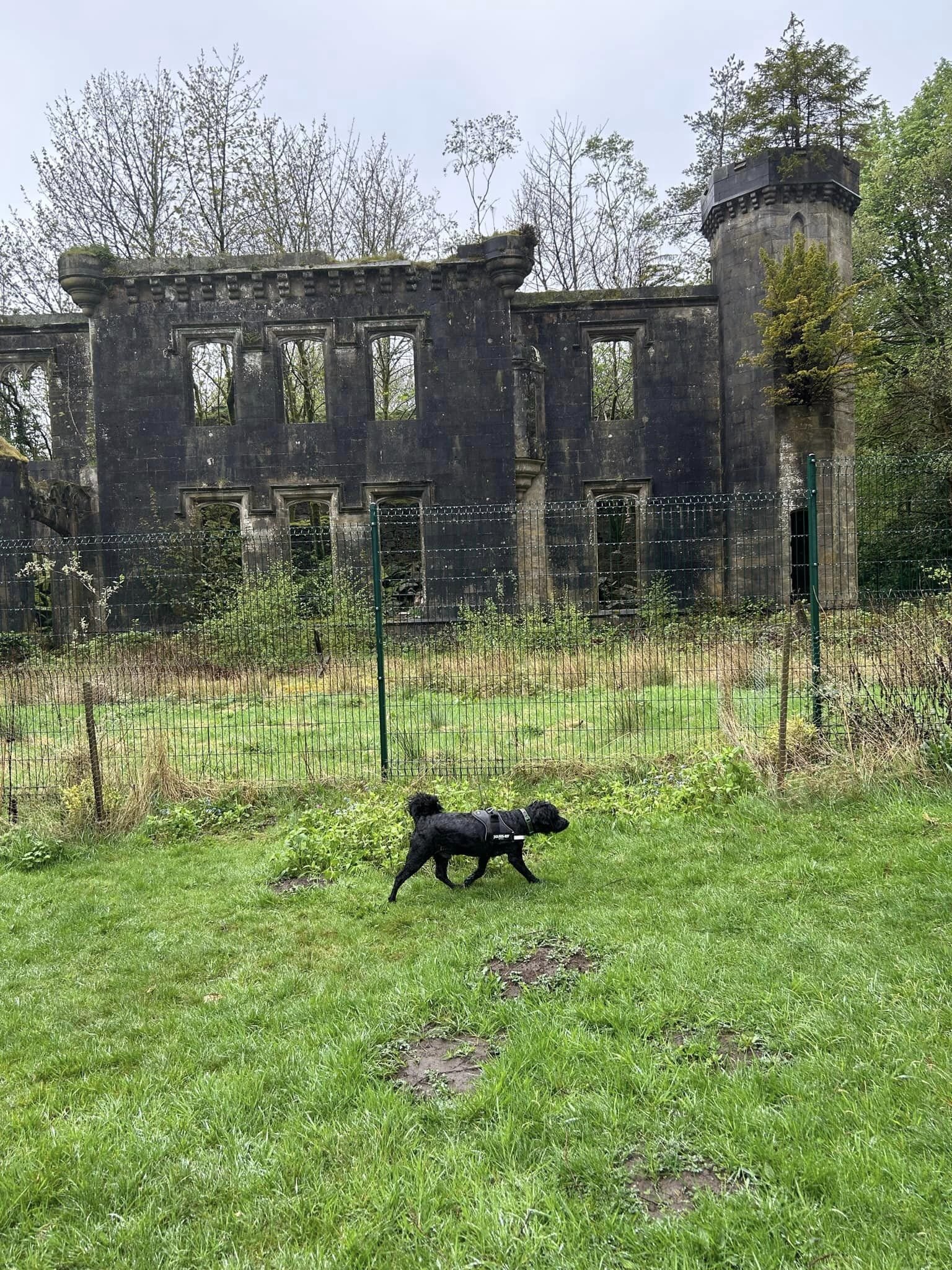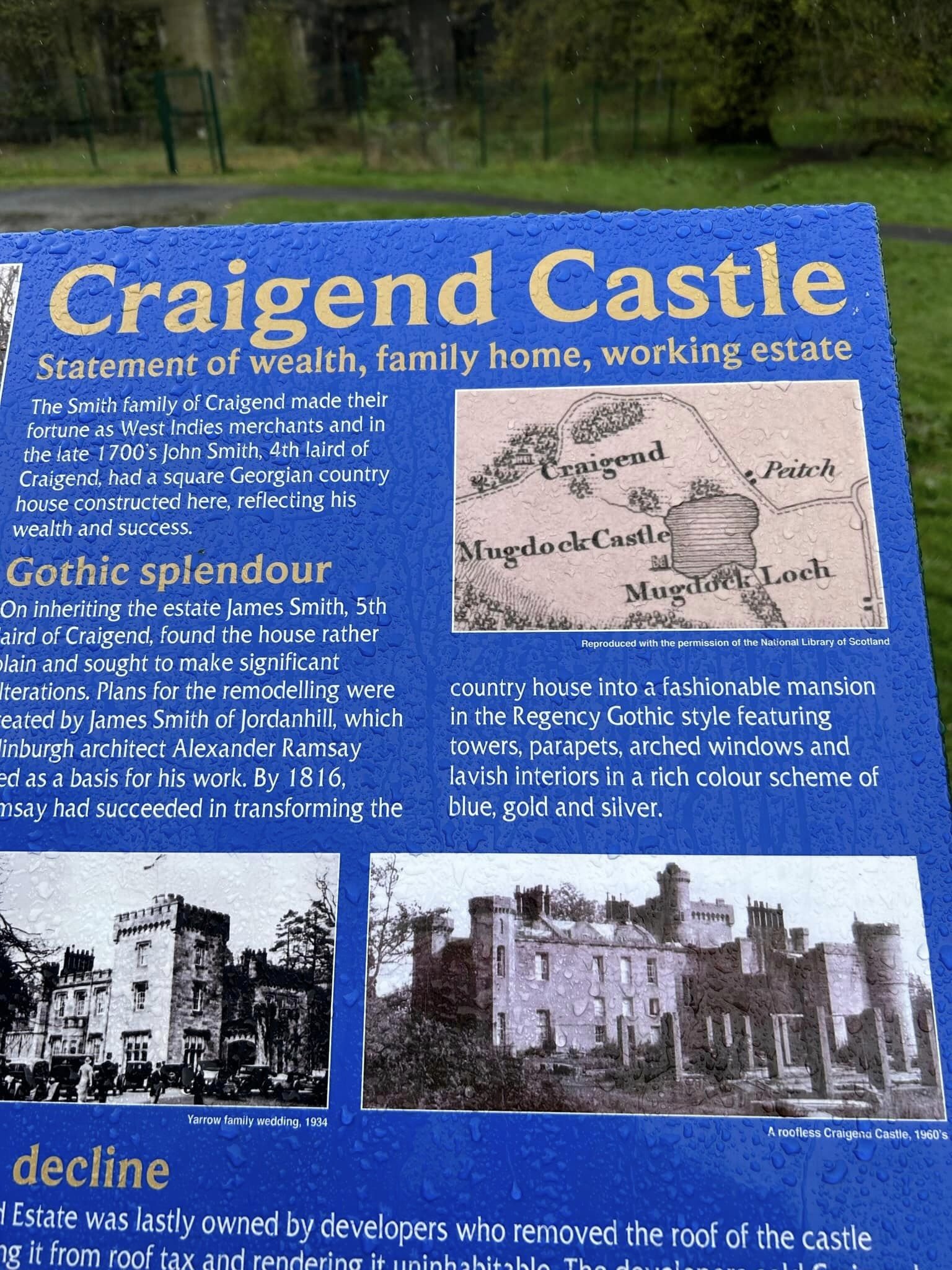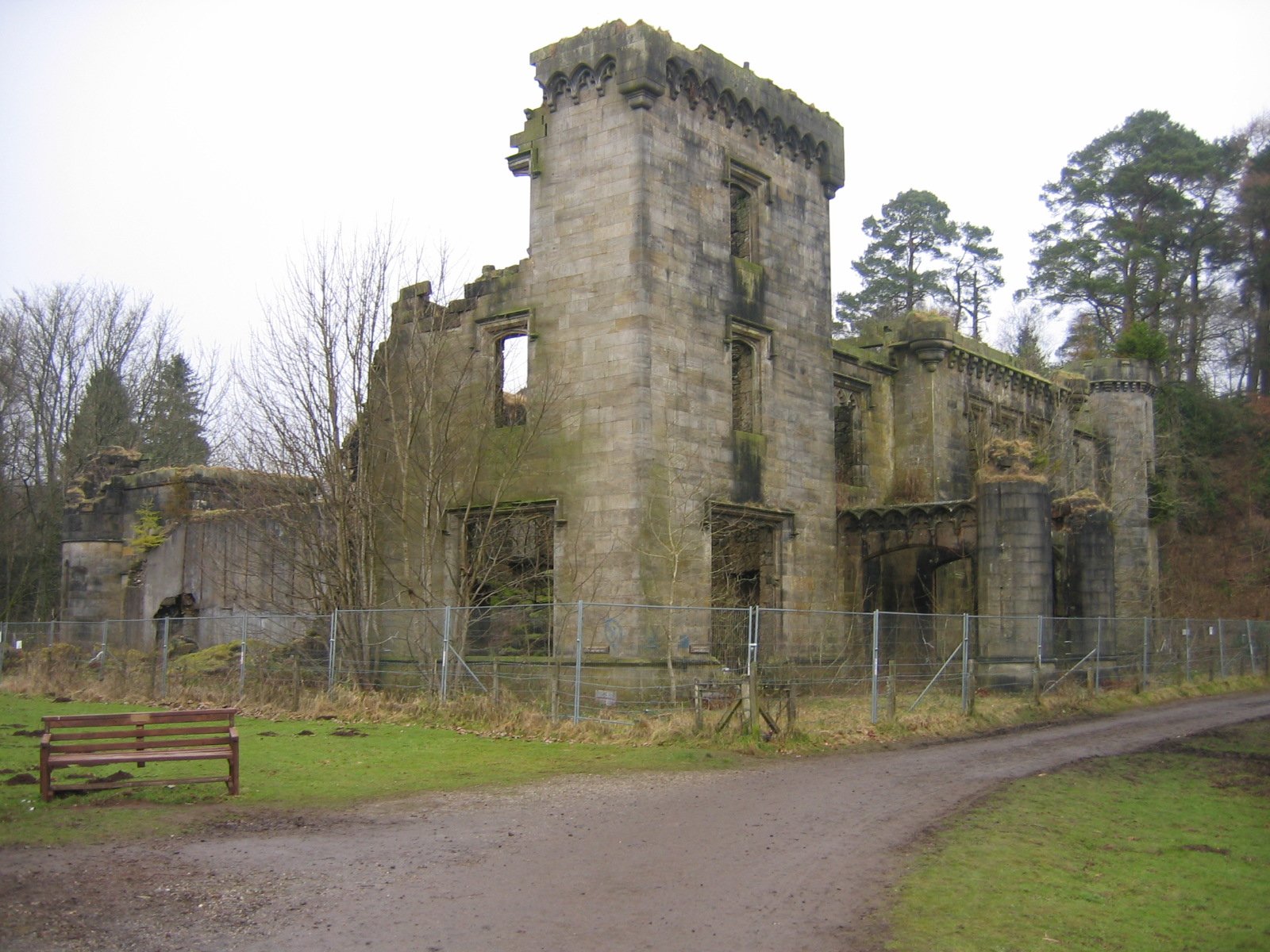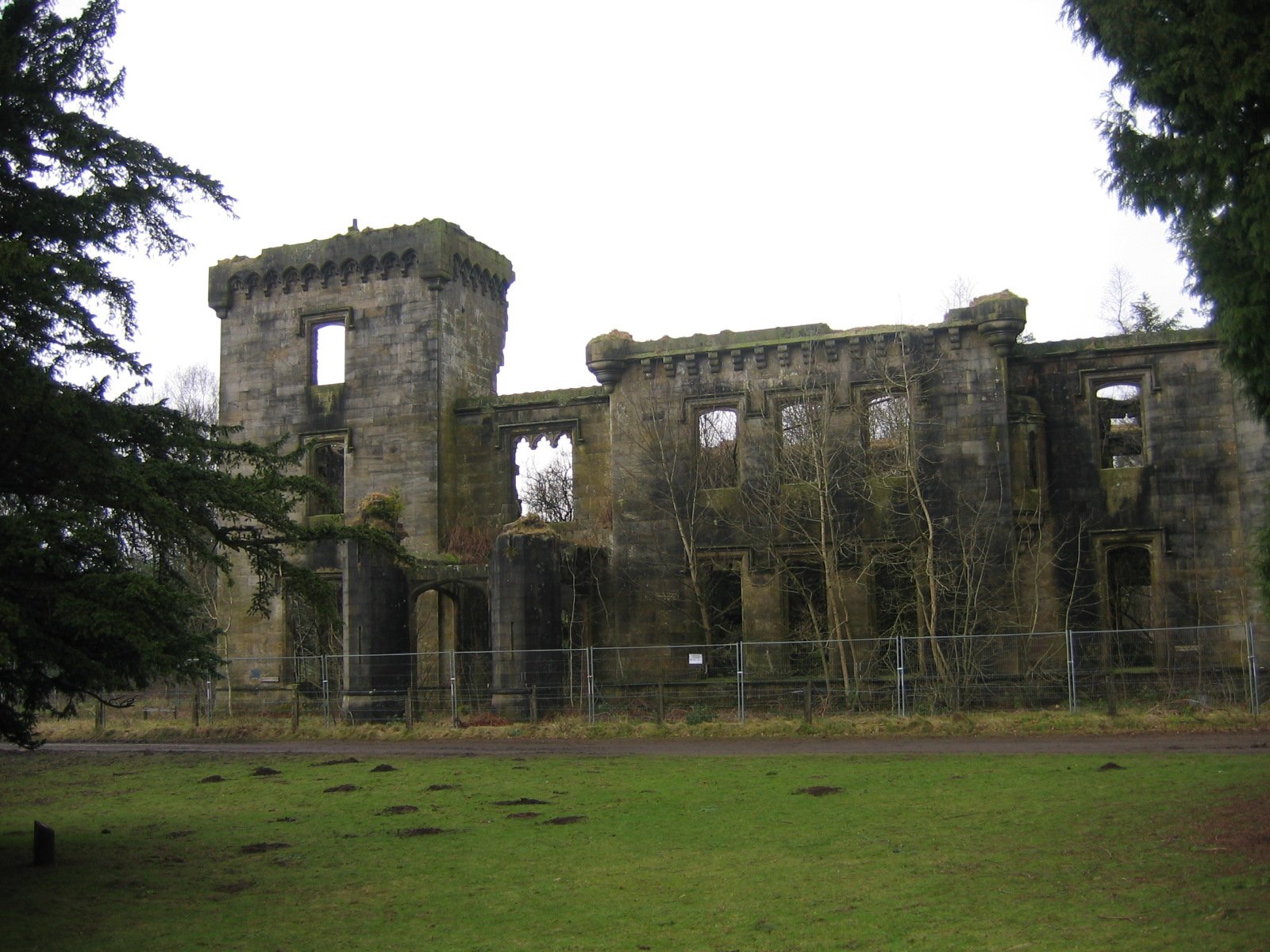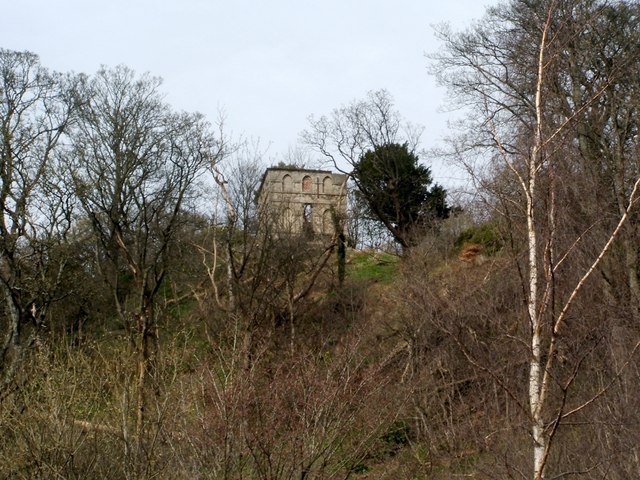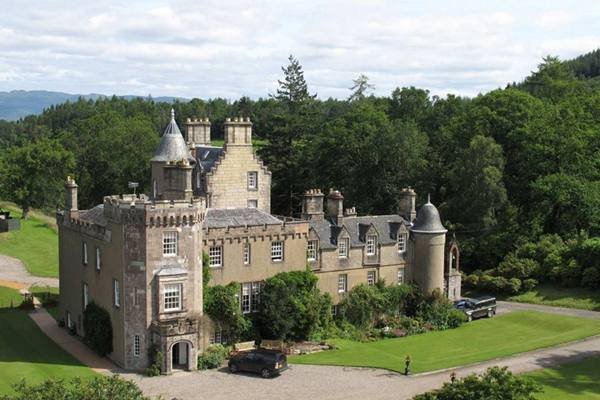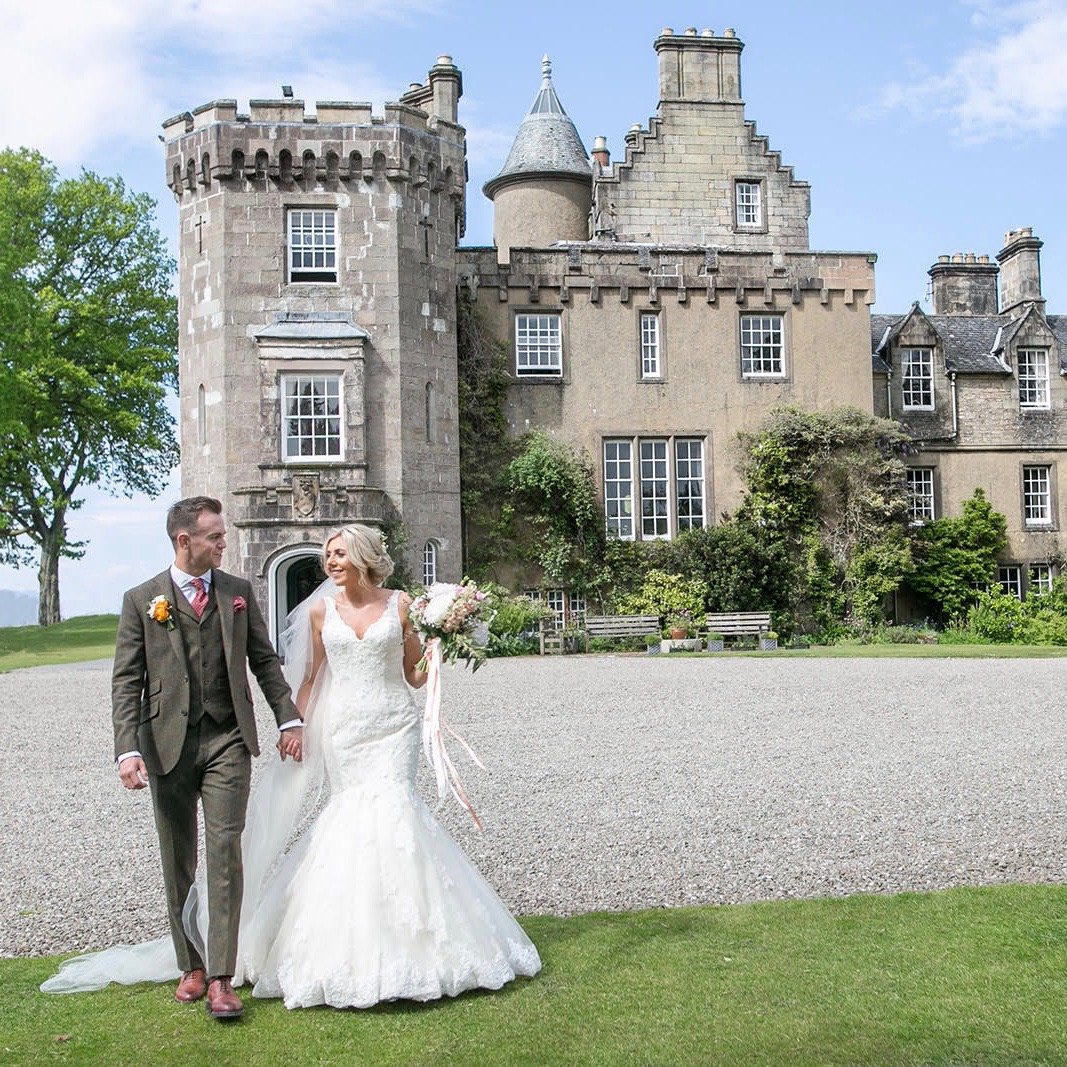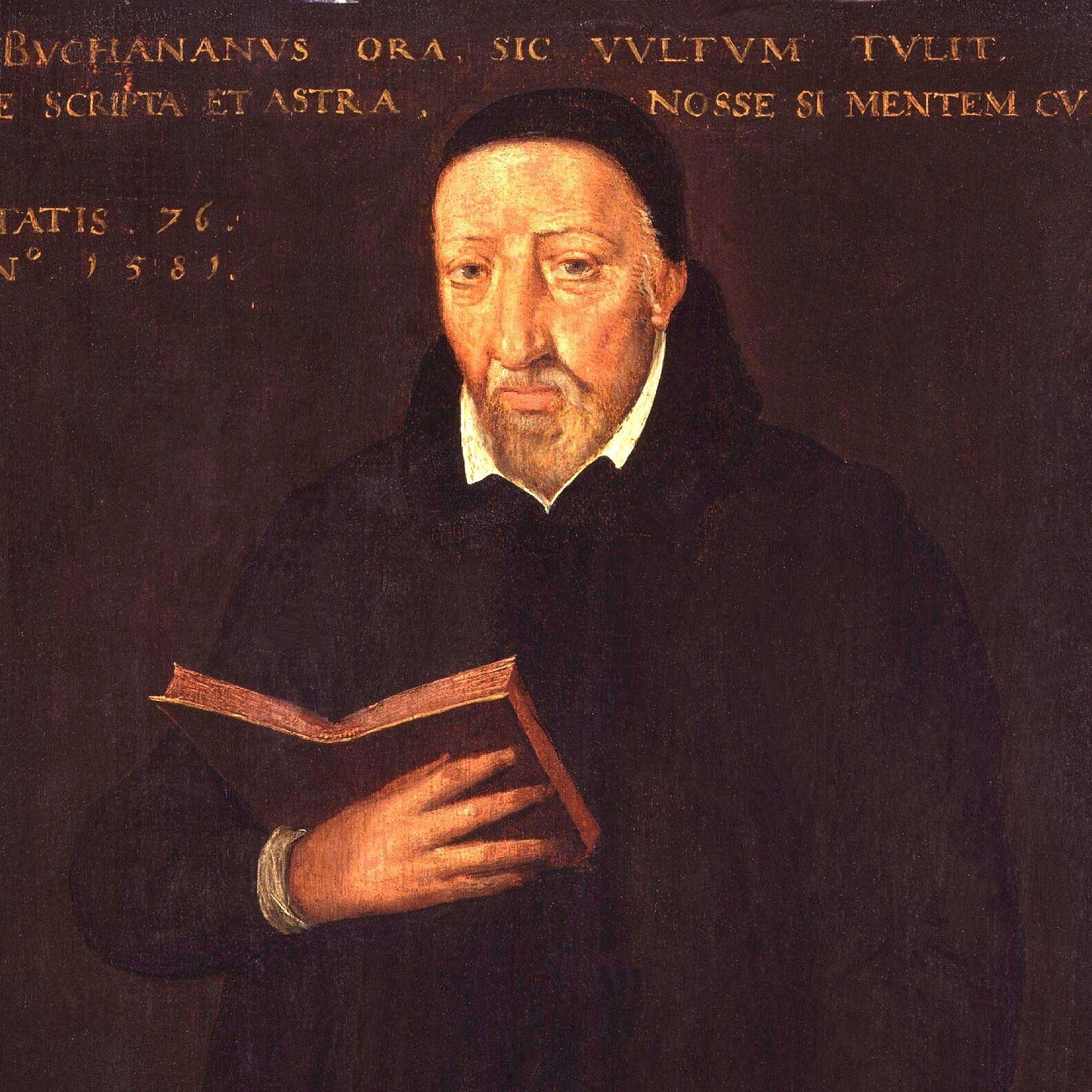Loch Lomond
The Loch is a defining character of Clan Buchanan; as we’re defined by being on the Eastern banks of Loch Lomond. Here are some facts:
It is the largest Loch in Scotland, by surface area.
It is the third deepest Loch in Scotland - at 623ft /190m.
720 sq miles (1,865 sq km) of the landscape around Loch Lomond have been designated as the Loch Lomond & the Trossachs National Park. 2002
There is no monster. But there is an ancient saying about Loch Lomond as having ‘a wave without a wind, a fish without a fin, and a floating island’. But, no monster.
Loch Lomond is only 27ft or eight metres above sea level.
Loch Lomond has a larger number of native and introduced fish species than any other loch in Scotland, with 15 native species.
Did you realised that the lyrics
“You take the High Road,
and I take the Low Road;
and I’ll be in Scotland before you”
refer to Loch Lomond!
See right and listen below…
The song was first published in ‘Vocal Melodies of Scotland’ (1841). No individual composer is credited.
The story is that the lyrics were written by a Jacobite prisoner, while awaiting his fate in Carlisle prison, in England. Maybe the prisoner was captured after the Battle of Culloden and shipped across the Border; maybe he was taken while the Jacobite army retreated northwards in the previous winter. Or maybe the whole thing is fictional. But, if it was written around the Battle of Culloden in 1746, then the words with variations must have been around for almost a century before being published.
As preferred by Captain Haddock
Tintin’s best friend in the famous Belgian cartoon and story series. His favourite whisky is a brand called “Loch Lomond”.
Blistering barnacles!
Lyrics Of ‘The Banks of Loch Lomond’
1.
By yon bonnie banks and by yon bonnie braes,
Where the sun shines bright on Loch Lomond.
Where me and my true love were ever wont to gae
On the bonnie, bonnie banks O’ Loch Lomond.
Refrain:
O ye’ll tak’ the high road and I’ll tak’ the low road,
An’ I’ll be in Scotland afore ye;
For me and my true love will never meet again
On the bonnie, bonnie banks O’ Loch Lomond.
2.
‘Twas there that we parted in yon shady glen,
On the steep, steep side o’ Ben Lomond’,
Where in purple hue the Hieland hills we view,
An’ the moon comin’ out in the gloamin’
Refrain:
3.
The wee birdies sing and the wild flow’rs spring,
And in sunshine the waters are sleepin’;
But the broken heart it kens nae second spring,
Tho’ the waefu’ may cease frae their greetin’.
Refrain:
Clairinch Island
In 1225, Maldonus, Third Mormaer of Lennox, granted a charter for Clairinch (or Clairinsh) to his seneschal, Anselan of Buchanan (the seventh Laird of Buchanan), in return for a pound of wax yearly.
The island was the clan seat for Clan Buchanan and the Clan adopted “Clàr-Innis!” as their battle cry.
The head of an iron ring-headed pin (a La Tène I (c) type) has been discovered and Roman pottery has been found in the remnants of “The Kitchen".
There is archaeological evidence for no less than seven buildings and seven stone jetties on the island.
Clairinsh remained the property of the Clan Buchanan chief until was acquired, in 1682, by the Third Duke of Montrose, and it remained the property of this family for the next two hundred and fifty years.
In 1934, William George Buchanan (1865-1939) (who made his fortune in the Chilean nitrate industry) purchased the island. He bequeathed the island to the Buchanan Society on the condition that it be held in trust forever and that he wished the island to be used as an animal and bird sanctuary with no shooting allowed.
From 1940, the island has been the property of the Buchanan Society.
In 1958, Clairinsh was declared as the first part of a National Nature Reserve under an agreement with the landowner.
Buchanan Auld House
Historic seat of the Clan Buchanan, the house was the property of the Chiefs of Clan Buchanan who controlled the surrounding lands from at least 1231 until 1682.
The property burned down in 1852.
The ruins of Buchanan Auld House exist today as part of a courtyard attached to the clubhouse of the Buchanan Castle Golf Club, which occupies the surrounding lands.
Buchanan Castle
No Buchanan has lived in this building AND it is NOT a Clan establishment.
The ruins of Buchanan Castle, one time seat of the Duke of Montrose (Clan Graham), lies about a mile west of the village of Drymen. The castle was completed in August 1854, the foundation stone was laid in August 1850.
Built in 1852-1858 by the Duke of Montrose to replace the manor house which burned in 1850.
It was a classy residence in its day. But its day only lasted a century. It was abandoned after World War II.
In 1954 the roof was removed so that it could no longer be taxed as a residence, and the building has greatly deteriorated since that time.
It is now “A romantic ruin.”

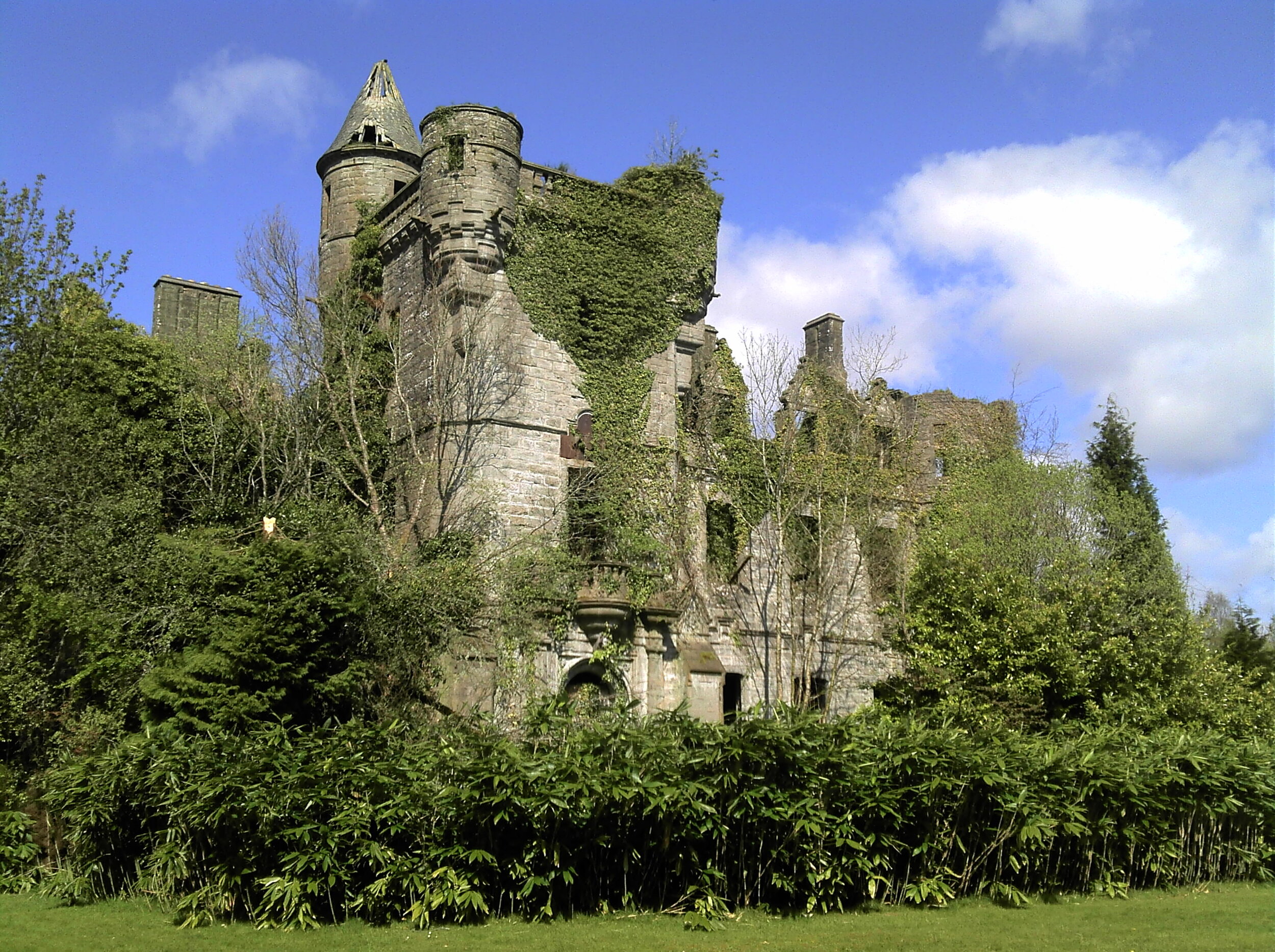
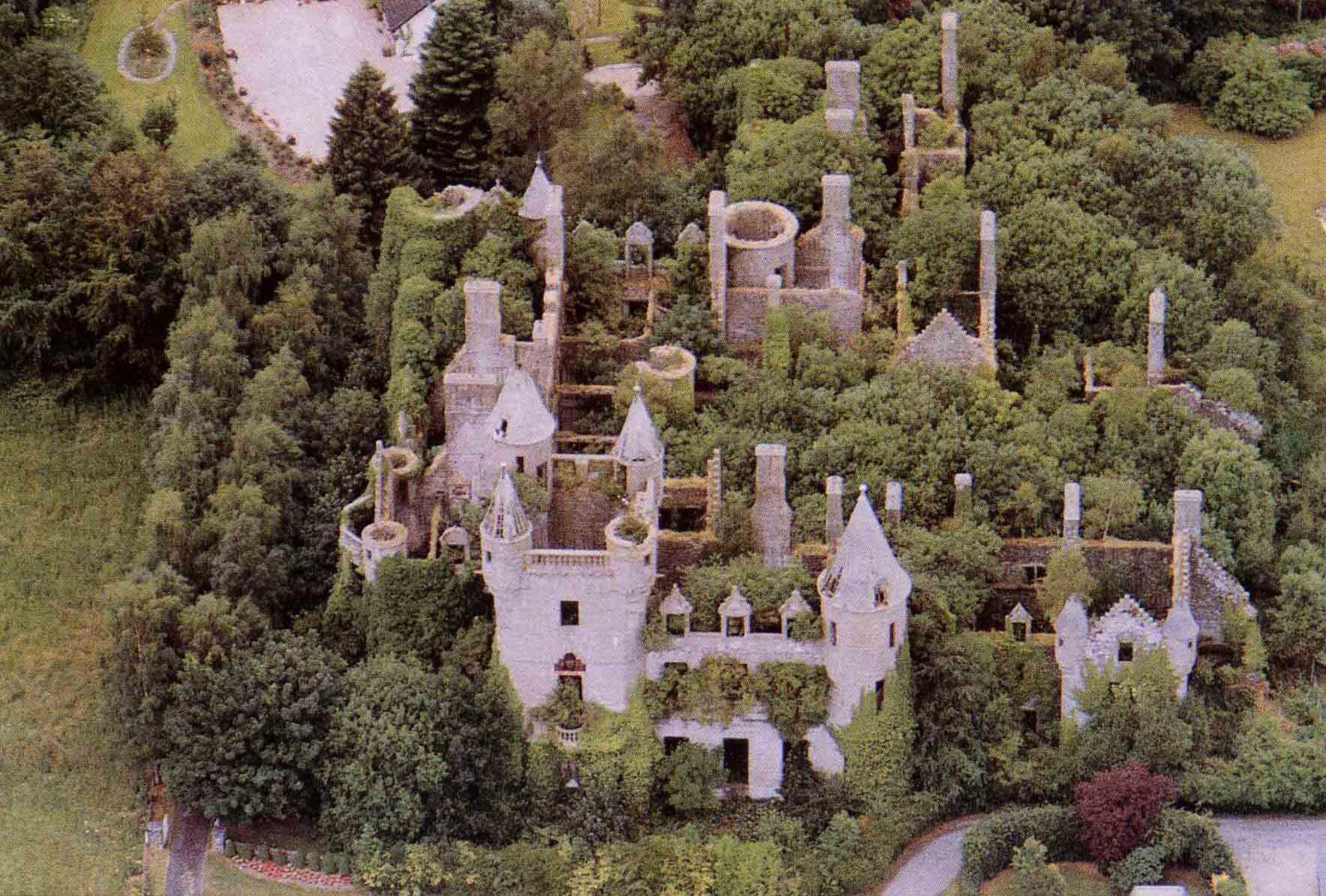
Current Buchanan Clan Seat: Cambusmore
The current Clan Seat is Cambusmore in Callander, Perthshire, Scotland.
“The Clan Seat is where our Chief resides – John Michael Buchanan of that Ilk.”
Cambusmore has been in the chief’s family since his line was established, circa 1300!
The estate is tens of thousands of acres and an active farm that is the full-time responsibility of the chief and family. The majority of the property is woodland, for both commercial hardwood and conservation woodland. Many parcels are for livestock agistment and other shared purposes.
The main manor has obviously stood for over 700 years and requires constant maintenance. During the Jacobite rebellion and The Act of Proscription (of 1745), many clan establishments (such as Cambusmore) were seized and held, AND during this period a part of a Jacobite standard was kept in a secret room in a house called old Newton of Doune.
The property consists of several buildings and is a full-time residence for the chief, his wife and kids (when they’re not at Uni) and is every bit a part of clan history.
Chiefs’ Burial Ground
The reputed burial ground of the chiefs of Clan Buchanan is in the grounds of the Old Buchanan Parish Church.
This church, the Chapel of St Mary and St Michael, served as a parish church after the abandonment of Inchcailleach in 1621 until a new church, in Milton of Buchanan, was built about 1764.
Located near the Buchanan Castle Golf Club (and Buchanan Auld House), nothing now remains of the original chapel (88).
The Buchanan Parish church cemetery:
Strathyre, Auchleshie and Stroneslany
These are lands that were owned by the Chiefs family in the past. The map shows their precise location.
Stroneslaney is outside the 1774 boundary but given its name "headland of the Lenys" we claim it anyway.
Leny, and Leny House
Leny is one of the oldest Septs of Clan Buchanan. Learn more about the Name.
Leny House, just north of Callander (which is just north of Current Seat at Cambusmore) dates back to 1513, and was long the property of the Buchanan family for over 1,000 years; most notable amongst whom was Francis Buchanan (1752 – 1829) who explored NE India, wrote several works of natural history and introduced many unusual plants to the grounds at Leny.
The house was restored in 1998 and is now used as a family-run self catering business.
Bochastel
Near Callander, Bochastel was home to MacIver Buchanan and Buchanan-Baillie-Hamilton
Callander
This is a ridiculously cute town! Seriously. Established thousands of years ago, this has been the North Eastern reach of Clan Buchanan – “The traditional clan lands of the Buchanan ... extends eastward into Stirlingshire through the towns of Killearn, Buchlyvie, Arnprior, Kippen and Callander”.
Auchleshie and Auchleshie House
As per Buchanan of Leny Arnprior and Auchleshie, first noted circa 1810. A seat of the Buchanan cadet line currently held by the Chiefs fourth child - Rory.
Buchany
South of Calander and north of Stirling, actually has no documented connection to Buchanan…
Doune
The Chiefs family have owned properties at Doune over the centuries
Ben Lomond
Ben Lomond is a mountain in the Scottish Highlands: 974 metres (3,196 ft) tall, situated on the eastern shore of Loch Lomond within the Loch Lomond and The Trossachs National Park, property of the National Trust for Scotland.
The name Ben Lomond is generally agreed to mean "beacon mountain" or "beacon hill" and offers spectacular views of Loch Lomond.
Ben Lomond summit. Photo curtosy of See Loch Lomond
Mentieth
The district of Menteith is covered here, but the lands and name have been a part of our Clan since before the twelfth century when out 10th Chief (Sir Maurice Buchanan married the daughter of Sir Walter Menteith….
The picturesque Lake of Menteith is Scotland’s only lake.
Blairvochy
Cashel
Sallochy
As per our History, “Confirmation is of charter by Donald, Earl of Lennox, in favour of Maurice Buchanan, son and heir of late Maurice Buchanan, of that carucate of land called Buchanan with Sallochy, with these bounds ie Akehin up to Aldmarr [Auchmar] just as it descends below the water of Hanerch [Endrick], and the land of Sallochy, with these bounds, from Sallochy all along to Kelg” the MacGilberts and Gilbertsons are descended from the Buchanans of Sallochy
Gartrenich
South of the Port of Menteith on the River Forth. The organisation at Gartrenich reported that they bought their patch from a Buchanan. Folklore attests that it was Buchanan Chiefly land and that the Chief had a right to authorise the use of part of it, but there is no legal record of this.
Craigend Castle
South of Buchanan Lands; the area was a part of the Barony of Mugdock in medieval times. The estate was sold in the mid-17th century to the Smith family. Three generations later, in 1816, James Smith, built an ornate mansion, designed by Alexander Ramsay in what is described as Regency Gothic style. In 1851 Craigend was sold to Sir Andrew Buchanan, the former Ambassador to the Habsburg court in Vienna.
Peel of Buchanan
One of the earliest Laird of Buchanan strongholds. The foundations are not likely to be there as the golf course has changed the landscape.
Shandon House
West of Buchanan Lands; In 1840, Walter Buchanan bought over 21 acres of ground at Shandon from Sir James Colquhoun of Luss.
Local historian Alistair McIntyre said: “It may well be the case that the land on which the original house stood was purchased at this time”. “One writer describes that house as plain but substantial, but the building was gutted by fire at some stage. By 1849, a much grander house had been completed as a replacement.” The new mansion was built in the Scots Baronial style by eminent architect Charles Wilson, whose work included many of the renowned buildings on Glasgow's Woodlands Hill. However architectural historian Frank Arneil Walker says that the quality of Wilson's work at Shandon has been compromised by later alterations and additions, including some by another well-known architect, John Honeyman.
Strangely it has a carving dated 1800, perhaps as a memorial to the previous house. Buchanan had a large library, and enjoyed reading works written in many different languages. He had a happy marriage, and his studies would be interrupted by the laughter and play of his children. He was now able to devote more time to politics. A committed supporter of the Reform Movement and the emancipation of Catholics, he was elected M.P. for Glasgow in 1857. One observer identified him as part of a ruling elite, which was “mainly composed of the steady, determined, moderate men of the upper middle class, who have ever been the backbone of Whiggery, opposed equally to the Toryism of the Lord Eldon and port-wine school, and the frothy sedition of the Democrats of the lower orders”.
Buchanan was considered shrewd, well-informed, self-reliant, genial and popular, but his life changed abruptly in 1865 when he found himself suddenly faced with financial ruin. He was said to have shown real strength of character coping with the crisis. A casualty was his beloved Shandon House, which was sold that same year to Mr Jamieson of Croy, Helensburgh, for £12,500. By the 1880's it had come into the possession of Andrew Charles Henderson, a shipowner. helensburgh heritage.co.uk
The photograph was taken from the pavement on the southern side of the busy A82. Unfortunately, there is no unobstructed view of this curious structure from anywhere along that road.
Buchanan of Auchentorlie temple
The Auchentorlie estate was acquired in 1737 by Andrew Buchanan of Drumpellier, Provost of Glasgow [see "History of the Parish of West or Old Kilpatrick", John Bruce, 1893].
Maps reveal that the building is about 7 metres square, and that it is called Temple; apart from that, it seems that the only available information about it is what can be discerned from a distance: it is unroofed, and has a small chimney-like feature
Burial vault of the Buchanans of Auchentorlie
This family vault is located to the ENE of Old Kilpatrick Parish Church. According to the inscription on the marble tablet visible at the SW end of vault, "this tomb was restored in 1887".
The tablet also bears the dates 1600 and 1887, a crest with motto "Clarior Hinc Honos", and the text "in memory of the Buchanans of Auchentorlie laid here since the year 1600".
John Bruce gives a detailed account of the Auchentorlie and Dunnerbuck lands and their occupants, including a discussion of the Buchanans, on pages 202-215 of his "History of the Parish of West or Old Kilpatrick" (1893).
The Moss
The 1506 birthplace of George Buchanan (tutor to James VI of Scotland / James I of England). The Moss, (a Grade II listed Georgian house dating from 1720) is surrounded by gardens and trees beside the River Blane. George Buchanan (1506-1582) was educated at Killearn, St. Andrews and Paris, he became a fluent linguist speaking Latin and Greek (superbly according to his pupil, James VI), in addition to French and his native Scots and Gaelic. He was a fluent translator of Hebrew and Spanish and may have spoken Italian. About Scotland
Boturich Castle
Built in 1832, on the site of the previous castle, Boturich Castle belonged to the Lennox and Buchanan families before the present owners took over. At that time, the novelist Sir Walter Scott visited Boturich to research his novel, Rob Roy. In 1850, the Octagon Tower was added and became the principal entrance to the castle.
The Buchanan Monument
In memory of George Buchanan, it was built in 1788. It was made of Killearn gritstone and stands 103 feet (31 metres) high.
It is owned by The Buchanan Society and was erected in 1788 to the memory of the Historian and Scholar George Buchanan (1506 - 1582).
Dumbarton Castle
And the historic link to Clan Buchanan. By Daniel MJ Buchanan
https://www.visitscotland.com/info/see-do/dumbarton-castle-p248621
Dumbarton Castle is one of the oldest strongholds in Scotland, situated 240 feet high on a volcanic plug of basalt known as Dumbarton Rock. The castle overlooks the town of Dumbarton. The name Dumbarton formed from the Gaelic "Dun Breatann" (fort of the Britons)
It was at Dumbarton on 20th March 1304, Sir John de Menteith, Constable of Lennox (ancestor of the Buchanan's) was appointed Warden of the castle, town and sherrifdom of Dumbarton Castle. John's granddaughter Margaret de Menteith, daughter of Walter Menteith of Rusky married Maurice of Buchanan and had issue.
In 1402, The Duke of Albany had removed Walter Danielston the Sheriff of Dumbarton Castle to the bishopric of St Andrews by 15th May 1403, the keepership of Dumbarton Castle and the Sheriffship of Lennox was given to Walter Buchanan, 11th Laird of Buchanan following an agreement made between Duncan, Earl of Lennox and Walter Buchanan. King Robert 111, confirmed the agreement. By 2nd February 1404, Walter Buchanan of that Ilk was styled "our sheriff of Dumbarton in a Charter by King Robert 111.
Historically the Sherriff of Dumbarton was the appointed royal official, responsible for enforcing law & order in Dumbarton and bringing criminals to justice.
In 1392 Walter Buchanan, 11th Laird of Buchanan had been named in charters along with Robert Stewart and his son Murdoch Stewart. Walter Buchanan who was possibly in his early 60s at this point was also in service of Murdoch Stewart at the Battle of Homildon Hill in 1402, where Murdoch Stewart was captured by the English unable to return home until 1416. Ref-HMC Report, X, App. vi. 78. "People & Power in Scotland: Essays in honour of T. C. Smout pages 4-5.
No records can be found after 1403 regarding Walter Buchanan, 11th Laird of Buchanan so he may have died soon afterwards or before the year 1407. His grandson, Walter Buchanan,12th Laird of Buchanan, circa 1385-1455 is recorded from 1407 as being Keeper of Dumbarton Castle until 1416.
Sir Walter Buchanan’s brother-in-law Walter Stewart (son of Murdoch Stewart, Duke of Albany) took over from Buchanan as Keeper of Dumbarton Castle RE: Red book of Menteith (from the National Library of Scotland)
Dumbarton Castle circa 1800. Image sourced by Daniel MJ Buchanan
Dumbarton Castle - July 2023. Image by Nenad Miletic on Google
Moving forward in the time of George Buchanan, 15th Laird of Buchanan, Sheriff of Dumbartonshire. It should be noted that In 1526 John Stewart, 3rd Earl of Lennox fortified Dumbarton against the Douglas faction who had control of the young James V, but his forces were defeated by Archibald Douglas, 6th Earl of Angus at the battle of Linlithgow Bridge.
11th July 1526 George Buchanan of that Ilk is mentioned in the appendix to Pitcairn’s Collection of Criminal Trials, under the date of 11th July 1526 In the register of The Privy Seal of Scotland, there is a respite to George Buchanan of that ilk, and twenty two others, “extract furth of the respitt of Johne erle of Lennox, for his tressonabill asseging, taking and withholding of our sourane lordis castle and fortalice of Dumbertine fra his serundis keparis thairoff”
14th April 1539, Decree by John Sprewle, Canon of Glasgow and Commisary of Mr. Adam Colquhoune, Canon and Official General of Glasgow, ordaining George Buchquhannan of that Ilk to pay George Striuing of Gloret, son of William Striuing of Gloret, formerly Captain of Dumbarton, two shillings for each day from 30th September 1534 to 1st September 1536, for the maintenance of Walter Buchquhannan, brother-german of George, while he was in ward in the Castle of Dunbertane. Dated 14th April 1539. Ref-Original Gloret Charter Chest)
18th September 1531, Walter Buchanan, had a remission from King James V, for seizing and detaining in the castle of Glasgow, John Duke of Albany, then Governor of Scotland. In this deed he is styled “ Salter Buchanan in Spittal” the property of which was then in the hands of George Buchanan of that ilk, who resigned his lands of Spittal of Easter-Catter to Edward, son of the said Walter Buchanan, as appears in confirmation in favour of this Edward by Gavin, Archbishop of Glasgow, dated 18th September 1531.
Rob Roys Cave
On the northeast shore of Loch Lomond near Inversnaid is the hideaway of Scotland's most famous outlaw. Rob Roy was a Scottish outlaw who became a folk hero through tales of his mid-1700s exploits. The cave is where Rob Roy hid when conducting raids or hiding from the Duke of Montrose's men. It’s not that easy to reach the entrance to the cave and there is an 8-foot drop to get in it, so if you do want a peek take care of your footing.
Rob Roy was born in 1671 and at the age of 18, along with his father, joined the Jacobite Rising. After the war, Rob Roy's father was charged with treason and put behind bars. Despite being a MacGregor we consider Rob Roy an honorary Buchanan, as he was born, raised, married and died on Buchanan land.
The Following information is taken from Buchanan Banner 26-2 Summber 1998
-
Arm is probably the Gaelic Earrann (fem) meaning a portion. The prior almost certainly relates to the priory of lnchmahome (Gaelic Innis mo-Cholmaig i.e. “my Colmoc's isle”, Colman being a saint's name) in the Lake of Monteith leac Moine Theadhaich).
-
Achadh (masculine) Mor (Large).
-
This is probably the Gaelic word for a chair, calhair (fem) which in Perthshire could also mean a plot or bed of any garden stuff. The second part is probably the word for a birch tree, Betula Alba, which in Gaelic is Beith (fem; -e genitive). The name is probably Cathair – Bheithe.
-
Cuil-Lodair or - I,odain. This would appear to be Cuil (fem) meaning corner, niche or nook and Lodan (masc; gen - ain) meaning little pool, bog or marsh.
-
This would appear to be Druim (masc) meaning a ridge, and the word for a cell i.e. church. Cill (fem; -e gentive). Thus, Druim a ‘Chille.
-
This is the old word for an island, Innis (fem) and Cailleach (fem) for an old woman, in this case a nun. The genitive is Cailliche, so the name should properly be Innis Chai/fiche.
-
This is lnbhir Cheitean in Gaelic. The name for the Battle is Blar lnbhir Cheitean. The Gaelic for Inver is lnbhir (masc) meaning a confluence of waters or mouth ot a river. Also spelt Ionbhar. The name Keith is Caidh in Cailhness and often now rendered as Ce.
-
Gaelic lnbhear (masc) mouth of a river. and Snathad (fem; aid genitive) a needle.
-
Watson considers this in Gaelic as I.analgh, but does not give a meaning. Johnston suggest that it is derived from Leana (masc) the word for green grassy meadow or swampy plain.
-
This means a hostelry or hospital, the Gaelic for which is Ospadal (masc). It may have been associated with the Knights Templars, who fought with King Robert ‘the Bruce’ at the Battle of Bannockburn in 1314.


